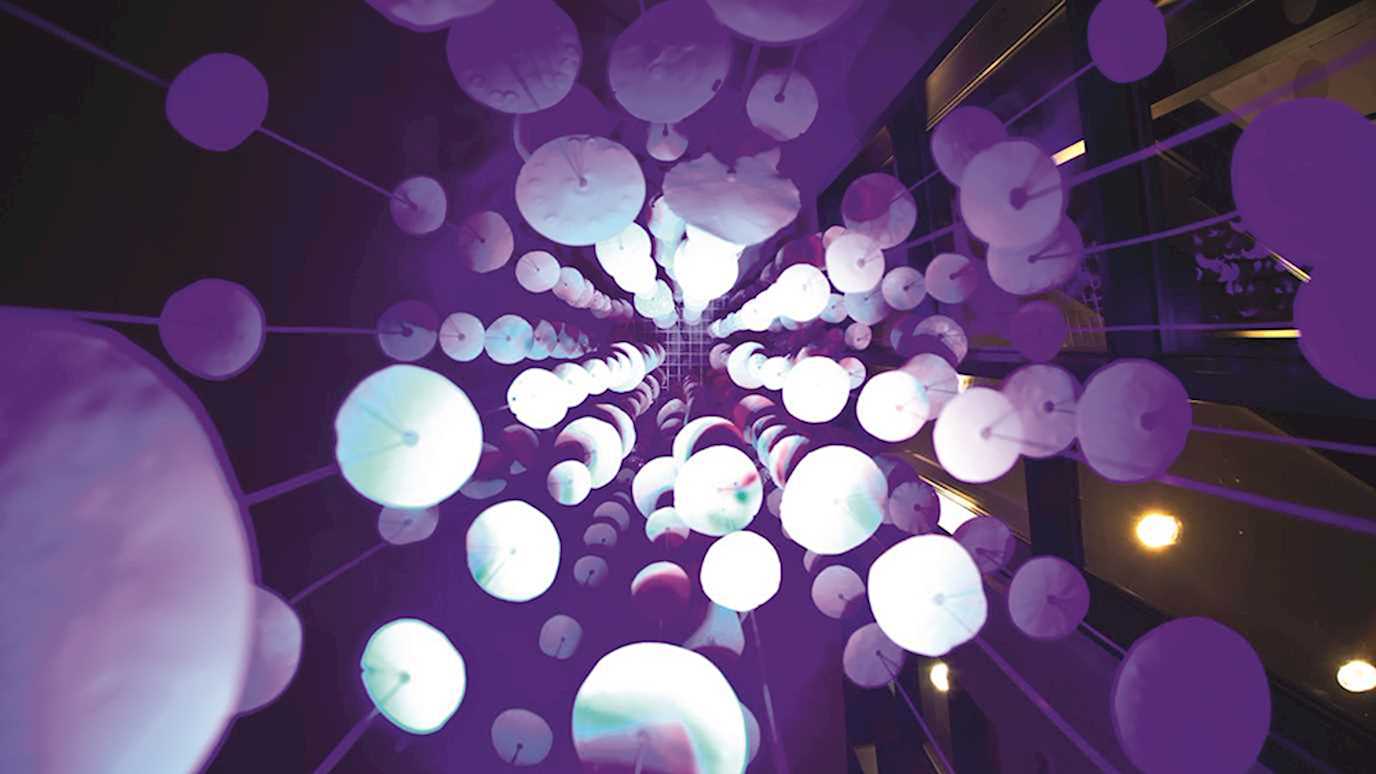Aryo Feldman
I am an interdisciplinary researcher, teacher and practitioner - spanning the natural and social sciences, from plant physiology to political ecology - with a focus on fostering food justice by agroecological approaches.
I have worked in various sustainability sectors, including CGIAR (formerly, the Consultative Group for International Agriculture Research), AIRCA (Association of International Research and Development Centers for Agriculture) and the UK environmental charity sector.
I have research interests in breeding underutilised crops as part of a broader project of diversifying agriculture, local agroecological food systems and using participatory (action) approaches.
I am on the steering group for The Agroecology Learning Collective (TALC), which aims to facilitate collaboration and knowledge-sharing across the sector, building regional, national and international links between teachers and learners, stimulating the development of new courses and promoting agroecology as a career.
I am a co-lead for a project on 'landed community kitchens' - community kitchens that share food sourced from local agroecological farms (as opposed to e.g. food banks) - in the North of England. It uses participatory action research for network/alliance building and to co-create a more substantial project bid.
I have two broader concerns related to scientific practice. The first is how, or whether, we can close the gap between the publication of findings and the impact that it promises. The second is how (or whether) academia can be self-reflective and responsible, particularly in acknowledging its positionality and power.
Projects
Genetic and trait characterisation of bambara groundnut
Bambara groundnut is an underutilised crop that behaves much like groundnut, or peanut, but is distinctive in its high drought tolerance. It is also considered nutritionally advantageous in having a balanced macronutrient profile and being a source of less common micronutrients.
A core objective of the project was the collection and development of its global germplasm. Given that it is an under-studied crop, we could not rely solely on the conventional channels, such as gene banks and institutional collections, but had to go into the field, which comprised of farmer landraces, market produce and researchers’ experimental material.
Another objective of the project was the assessment and characterisation of germplasm. Growth, yield and traits related to environmental interactions (including drought and water stress) were used to rank developed genetic lines according to specific environments. This was combined with socioeconomic preferences, particularly according to farmers' and end-users' preferences.
Key findings
The targeted outputs were released lines with improved drought tolerance and cookability, selected for particular agro-environments by local farmers. There is little improved genetic material of bambara groundnut available and these two traits in particular are crucial in the face of climate change and unpredictable weather patterns. The project also addressed the limited scientific understanding of the genetics underlying traits of interest, non-optimised controlled breeding systems and lack of comparative and multi-locational field performance data, which are all barriers to its crop improvement (as well as for minor crops in general). In addition, a continuous concern was the retaining (in-situ and ex-situ) of all genetic diversity generated regardless of the advancement of ‘elite’ material.

Collaborators
Aryo Feldman, CoI, Crops For the Future Research Centre
Sean Mayes, PI, Crops For the Future Research Centre
Joe Berchie, CoI, Council For Scientific and Industrial Research - Crops Research Institute
Satriyas Ilyas, CoI, Bogor Agricultural University / Institut Pertanian Bogor
Michael Abberton, CoI, The International Institute of Tropical Agriculture
Start and end dates
5 Dec 2014 - 4 Dec 2017
Award
International Treaty on Plant Genetic Resources for Food and Agriculture Benefit Sharing Fund
Window 3
W3B-PR-26-Malaysia
USD 499,999
Breeding the C4-type Trait of High Vein Density in Rice Mutants
Description
During the last few decades world rice production has more than doubled from 252 million tones in 1966 to 600 million tones. However, there is still a need for 25% more rice production by 2025 to meet population growth, which is especially prominent in rice eating regions. To increase crop productivity, various strategies involving conventional breeding and applied genomics are being attempted worldwide. One of these options is to explore the possibility of transferring C4-type traits into today’s C3 rice. The C4 photosynthetic system is operated by plants such as sorghum, maize and sugarcane. It was an evolutionary advancement of C3 photosynthesis (still found in the majority of plants like wheat, potatoes and oil palm) that was able to allow plants to cope with the falling CO2 levels in hot and dry climates. Major advantages that helped C4 plants thrive were:
- almost twice the efficiency in dry matter production per unit of water transpired. In drought-prone ecosystems, yields could be maintained or increased with less water and less fertilizers, especially when coupled with the rising atmospheric concentration of CO2;
- photorespiration is rarely greater than 5% the rate of photosynthesis while in C3 it can exceed 30% of the rate of photosynthesis above 30 oC;
- greater photosynthetic efficiency at high temperature and light levels.
The characteristic of high leaf vein density is crucial to the C4 syndrome. It is requisite for rapid diffusion of photosynthetic metabolites between the mesophyll and bundle sheath cells. McKown and Dangler (2007) claimed it to be one of the initial bridges of C3 plants to becoming C4 and Brodribb and Feild (2010) hypothesised that leaf venation was an evolutionary step for the leap in plant photosynthesis.
Two sources of rice mutants were available for the exploration of novel variation. At the International Rice Research Institute (IRRI), Los Baňos Philippines (IRRI), a large collection of chemical and irradiation induced mutants has been made in IR64, the most widely cultivated indica variety. Two large collections of activation-tagged japonica rice are available from Pohang University of Science and Technology in Korea and from Academia Sinica in Taiwan. Insertional activation mutagenesis is designed to disrupt or activate genes to generate novel gain- or loss- of-function phenotypes. IRRI has established collaboration with both groups under the C4 Rice Consortium.
In this project, I screened the available rice mutant resources for the C4-like trait of high leaf vein density to determine its genetic basis. This was carried out under the fundamental premise that the rice genome has sufficient genetic plasticity and potential to yield measurable C4-like traits and that such latent potential for C4-like characteristics in rice can be revealed by artificially inducing variation in the genome.
Key findings
Twelve-and-a-half-thousand lines from the IR64 knockout mutant collection were screened for the C4 trait of high vein density. The screen design picked out candidates at a rate of approximately one candidate for every thousand lines. Microscopy analysis and long-term field and greenhouse experiments backed up the ability of the screen to pick out true candidates. Based on further analysis, five narrow leaf IR64 mutant lines were considered to be high vein density candidate mutants.
Three insertion lines were picked out as high vein density candidate mutants from a vein density screening of 1,170 lines from Kyung Hee University and 10,830 insertion lines from Academia Sinica.
The conclusion of segregation analysis was that the high vein density trait was caused by monogenic recessive mutations in knockout candidate mutants and monogenic dominant mutations in insertion candidate mutants. This was in line with the general finding that knockout mutagenesis produces recessive mutations and gene activations cause dominant mutations.
There was genetic linkage between narrow vein spacing and narrow leaf width, clearly evident in the narrow leaf widths of high vein density candidates. Double mutant phenotypes showed an untangling of the two traits and so their potential pleiotropy or complete linkage was doubtful.
The discovery of eight candidate mutants that consistently had increased vein densities indicated that there was enough plasticity within the rice genome to yield a measurable increase in vein density and that mutagenesis (point, deletion and insertional mutagenesis) was able to unleash this latent potential.
The increased vein density trait was found to correlate with anatomical features, including with interveinal mesophyll cell number in two of the five knockout candidate mutant families and all three insertional candidate mutant families. Therefore, the vein density screen could be used as a means of finding the more C4 relevant trait of a low mesophyll cell to bundle sheath cell ratio. In addition, improvements in photosynthetic performance and biomass production per leaf area (a rough estimate of radiation-use efficiency) were discovered, especially in candidate knockout mutant lines.
Whole genome sequencing fine mapped the candidate mutations responsible for effects on vein density using two knockout populations. Putative activation genes were identified using bioinformatics.
Collaborators
Aryo Feldman (PI)
Hei Leung (supervisor)
Erik Murchie (supervisor)
Festo Massawe (supervisor)
The C4 Rice Consortium
Start and end dates
1 Sep 2009 - 31 Aug 2012
Award
PhD Scholarship from Monsanto Beachell-Borlaug International Scholars Programme
Project funding from Bill & Melinda Gates Foundation





















